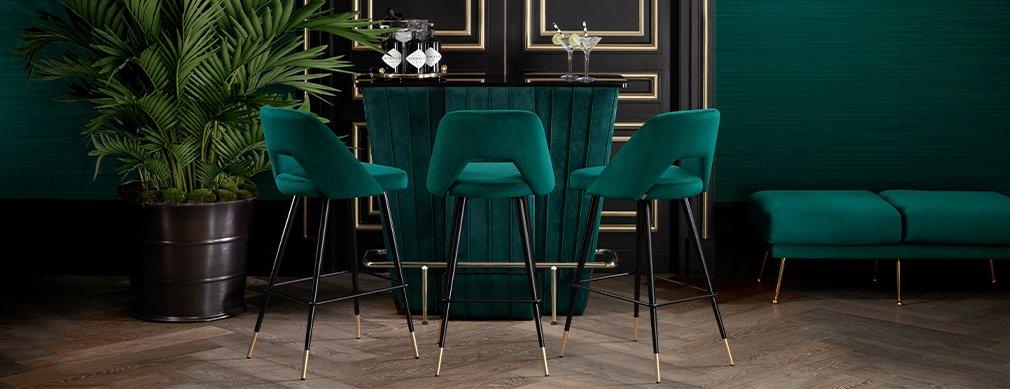India's Furniture Market Ranks 4th Globally, with 11% Consumption Growth in 2024
India's furniture industry is transitioning from its traditional workshop-based local craftsmanship to a model that integrates industrialization, branding, and globalization. Core data confirms that this transformation is far from trivial. Multiple market research institutions and industry media have ranked India as the world's fourth-largest furniture market, with an estimated size ranging from over $20 billion to more than $27 billion. Even amid sluggish global demand in 2024, India's furniture consumption (in USD terms) still achieved double-digit growth—approximately 11%—making it one of the fastest-growing markets in the Asia-Pacific region.

Local Production Dominates, While Imports and Premium Brands Accelerate Market Entry
Despite the strong upward momentum reflected in the data, India's furniture consumption remains dominated by locally produced goods. Industry statistics and trade observers estimate that imports account for only a single-digit share—around 8%—of total consumption. However, this 8% is becoming a market bellwether: roughly 70% of these imports come from China, mainly filling the mid-range market gap; the high-end and luxury segments, by contrast, rely more on supplies from Italy and Europe. In other words, Indian consumers still predominantly choose domestic products for the mid-to-low-end market, but their demand for overseas designs and brands in the high-end market is rising significantly.
For Domestic Manufacturers, This Brings Both Threats and Opportunities
Traditional family-run workshops and independent craftsmen hold "emotional capital" in the local market by leveraging handcrafted techniques and regional craftsmanship. Yet, they lack scalable replication capabilities, strict quality control systems, and an international design perspective, leaving them unable to meet the fast-growing demand for mid-to-high-end products and project-based orders. It is in this gap that large enterprises and chain brands are accelerating their expansion: players such as Godrej Interio, Nilkamal, Supreme Industries, and Stanley Lifestyles hold clear advantages in channels, supply chains, and capital operations. Industry consolidation, mergers and acquisitions, and capital inflows are driving the shift from a "fragmented kingdom" to an "organized market."
E-Commerce and Digital Tools: Bridges to Tier-3 Cities and the New Middle Class
Omnichannel players, represented by Pepperfry, have integrated photography, logistics, and after-sales services into their platform models, lowering market entry barriers for small suppliers. The recent signing of a letter of intent for TCC Concept to acquire Pepperfry is widely viewed by the industry as a model of synergy between real estate and furniture retail: it binds furniture sales, model homes, and property services together to form a closed-loop "from delivery to furnishing" service.
From Low-Cost OEM to Global Trials of "Indian Design"
India's furniture exports still account for a small proportion of its total output (approximately 9%), but exports have achieved an average annual growth rate of around 8% between 2014 and 2024. More importantly, the export product mix is gradually upgrading from low-cost original equipment manufacturing (OEM) to higher-value offerings. A group of emerging brands emphasizing "Indian craftsmanship + modern design" is expanding into European, American, and Middle Eastern markets. The luxury brand DIVIANA’s opening of a flagship store in Milan is regarded as a landmark event marking Indian brands’ entry into the global high-end stage; design brands like DeMuro Das have also established presence in New York and Europe, leveraging design influence to expand overseas channels. If India can address its shortcomings in quality standardization, stable raw material supply, and large-scale production, its weight in the global supply chain is poised to increase significantly.
However, Structural Challenges in India’s Home Furnishing Industry Cannot Be Ignored
First, logistics and inland distribution costs remain excessively high. Second, raw material price volatility and the construction of sustainable supply chains pose challenges—although India has abundant wood and artisanal resources, high-quality, traceable raw materials still rely on imports or scattered domestic sources.
Market Leaders Adopt Diverse Strategies to Address Challenges
Some traditional large manufacturers are leveraging capital expansion and channel penetration to convert their store networks and B2B project businesses into B2C sales—Godrej Interio’s expansion plan is a typical example. Others are partnering with international designers to enhance product premium and brand recognition. Additionally, some enterprises are betting on digitalization, from AR-based furniture placement trials and 3D customization to building in-house logistics, aiming to use technology to offset efficiency losses caused by market fragmentation. At the policy level, the "Make in India" initiative and relevant quality control orders provide competitive advantages to organized domestic manufacturers, but they also increase the pressure on the unorganized sector to integrate.
The Future of India’s Furniture Market
Over the next five to ten years, India’s furniture market is likely to develop along two parallel tracks: on one end, standardized and industrialized production serving the large-scale domestic demand, with a focus on price competitiveness and market coverage; on the other end, high-end exports and brand expansion centered on design, sustainability, and customization. If policy support, capital, and design capabilities continue to flow in, these two tracks are not zero-sum: local craftsmanship can provide a differentiated cultural foundation for high-end brands, while industrialization capabilities can scale up the global export of these cultural assets. For investors and manufacturers, the question has shifted from "Can India rise?" to "In what form will India rise?"—whether as a low-cost manufacturing powerhouse or an unignorable center for design and manufacturing in certain high-value chains. The answer remains open for now, but its direction and pace are already striking.